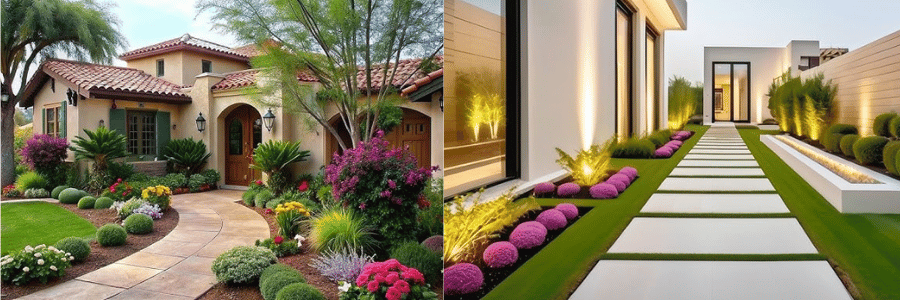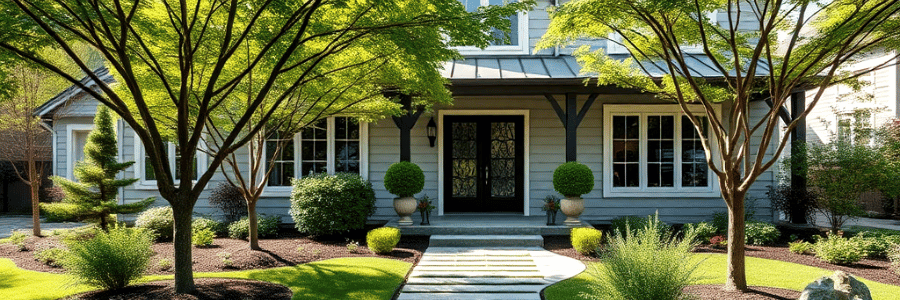Your home’s windows offer more than just a view of the outside world—they can become a dynamic frame for nature’s beauty. Imagine looking out of your window and seeing a carefully designed garden, with plants chosen to complement both the interior and exterior of your home. This concept, known as “window landscaping,” is an artful way to blend your indoor and outdoor spaces while enhancing your views, privacy, and overall aesthetic. Whether you’re looking to improve your curb appeal or simply enjoy a more vibrant outlook from your window, window landscaping can help you create a living picture frame of plants and garden design.
Explore the basics of window landscaping and share practical tips on how to create a stunning view that enhances both your home and your mood.
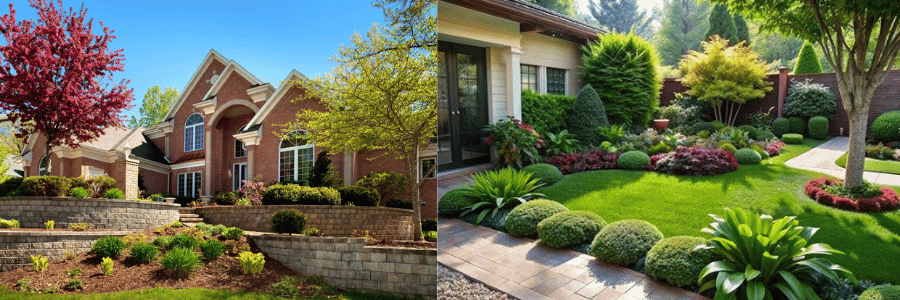
1. Understanding the Importance of Your Window View
Before you start adding plants or arranging your garden, take a moment to consider the existing view outside your window. Does it offer a pleasant vista, or does it look bland or cluttered? The first step in window landscaping is to identify what you like and what you’d like to improve. Here are some considerations:
- Frame the View: If you’re lucky enough to have a beautiful garden or natural scenery outside, window landscaping is about framing that view with complementary plants. This could mean arranging flowers, shrubs, or trees that accentuate what you see without blocking it entirely.
- Create Privacy: Windows that look out onto a busy street or neighbor’s home may need a bit more attention. Window landscaping can offer a natural way to create privacy by planting tall hedges, climbing vines, or window boxes full of lush greenery.
- Enhance Curb Appeal: The plants you select for your window landscape can also improve your home’s curb appeal, making it more welcoming to guests or simply a pleasure to look at from the inside.
2. Choosing the Right Plants for Window Landscaping
The plants you choose will depend largely on the type of window you have, the climate you live in, and the overall style of your home. Here are some plant ideas based on different goals:
a) For Framing Your View
If you have a beautiful view that you want to enhance without blocking it, consider plants that will draw attention to the edges of the window. This can include:
- Tall Grasses: Ornamental grasses like fountain grass or feather reed grass can add vertical height while maintaining a sense of openness. Their airy texture allows light and views to pass through.
- Climbing Vines: For a more natural and romantic look, climbing vines such as clematis, ivy, or jasmine can be trained along trellises or frames near the window. These add greenery without obstructing your view entirely.
- Flowering Shrubs: Plants like lavender, hydrangeas, or roses can offer vibrant pops of color and pleasant fragrances, creating an inviting scene.
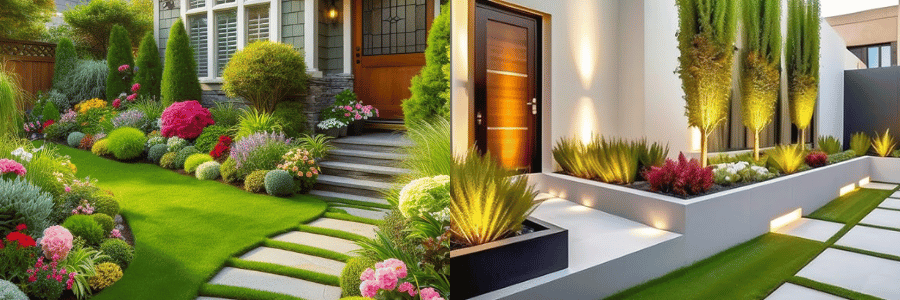
b) For Privacy
To create a more secluded window view, you’ll need plants that provide height and density. Consider these options:
- Tall Hedges: Boxwood, holly, or privet are excellent choices for creating a living privacy screen. They can be trimmed to a specific height, ensuring they don’t block the light but still offer seclusion.
- Bamboo: If you want fast-growing, dense privacy, bamboo is a great option. It’s quick to establish and offers a lush, green backdrop.
- Privacy Plants in Window Boxes: Consider using window boxes with trailing plants, like cascading petunias or trailing ivy, for added greenery that helps frame your window while also adding privacy.
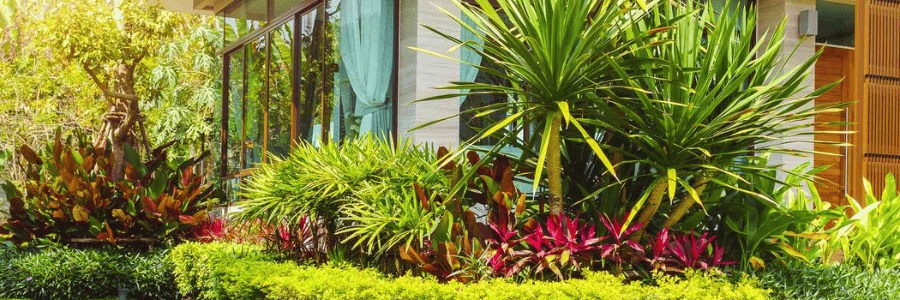
c) For Seasonal Interest
To ensure that your window landscape looks attractive year-round, choose plants with varying textures, colors, and seasonal interest. For example:
- Spring & Summer: Bright flowers like tulips, daffodils, or geraniums bring vibrant color and a cheerful vibe during the warmer months.
- Fall & Winter: Evergreens like holly or juniper provide structure and greenery even when other plants have gone dormant. Consider adding seasonal accents like pumpkins, small evergreen shrubs, or decorative branches for a cozy winter look.
3. Incorporating Garden Design Principles
Good garden design isn’t just about plants—it’s about creating a harmonious relationship between the interior of your home, the window view, and the surrounding landscape. Here are some design principles to help you make the most of your window landscape:
- Balance: Ensure that the plants you choose for your window are balanced in height, color, and texture. A heavy plant on one side of the window might create an unbalanced effect. If you have a symmetrical window, try matching plants on both sides for a neat look.
- Layering: Think in terms of layers when designing your window landscaping. Place taller plants toward the back, closer to the window, and use smaller plants or flowers in the front. This adds depth and interest to your design.
- Color Coordination: Consider the colors of your home’s exterior when selecting plants. If you have neutral-colored walls, bold, bright flowers can create a vibrant contrast. On the other hand, if your home features vibrant colors, you might want to choose more subdued or monochromatic plants to complement the palette.
- Texture and Contrast: Combining plants with different textures can make your window view feel dynamic. For example, the soft, billowy texture of lavender can contrast beautifully with the spiky, structured form of succulents or ornamental grasses.
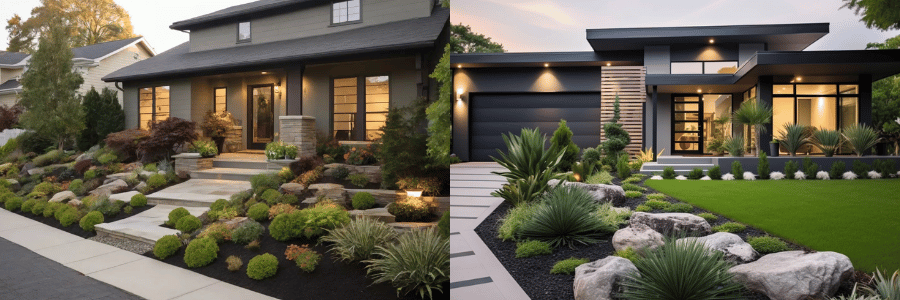
4. Practical Considerations for Window Landscaping
While the visual appeal of your window landscape is essential, it’s also important to think about practicalities:
- Light Requirements: Consider how much sunlight your window gets before selecting plants. South-facing windows will receive more direct light, which is ideal for sun-loving plants like succulents and tomatoes. North-facing windows may benefit from shade-loving plants like ferns or hostas.
- Maintenance: Think about how much time you’re willing to invest in caring for your window garden. If you want something low-maintenance, opt for hardy, drought-tolerant plants. If you love gardening, you may enjoy tending to a mix of flowering perennials or annuals.
- Watering Needs: For plants near the window, ensure they get proper watering, especially if they are in containers or window boxes. Installing a drip irrigation system or using self-watering planters can help reduce maintenance.
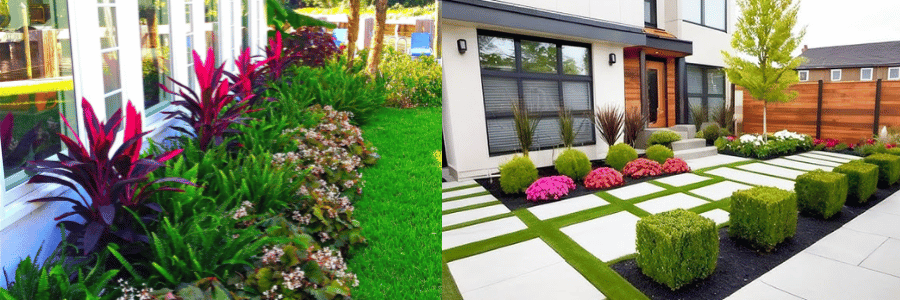
5. Window Boxes and Planters: Adding Instant Charm
One of the easiest ways to begin your window landscaping journey is by adding window boxes or planters to your windowsills. These can be customized to suit any style, whether you prefer a rustic wooden box, a sleek modern planter, or a whimsical wrought-iron option. Window boxes are an excellent choice for small spaces or apartments and can be filled with an assortment of plants to suit the season.
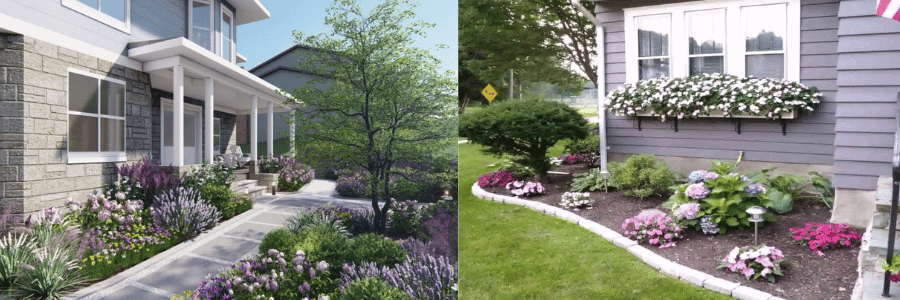
Conclusion
Window landscaping is a creative way to turn your view into an ever-changing work of art. With the right combination of plants, garden design, and careful planning, you can enhance your window views, increase privacy, and add a touch of natural beauty to your home. Whether you have a sprawling backyard or a modest urban window, the power of plants can transform your outlook and make every glance out your window feel like a moment of serenity.

